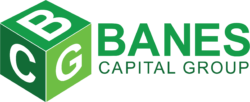Summer Vacation
No matter the plans or distance of any vacation, since the beginning of time the driver has heard that quintessential question: Are we there yet? In this case, Fed Chair Jerome Powell is at the helm and the destination is tapering asset purchases. Our thoughts remain the same. In the Bond Market Review (08/03/21), we said: “We think the Fed will take the opportunity of their annual symposium during their August 26th–28th retreat in Jackson Hole, Wyoming to establish a plan. That should allow an announcement in their September meeting. The premise is that progress has been made and purchases are less necessary.” Our answer, and we think the Fed’s, to that question is – we’re on course, but still ‘a ways’ off! We’ve wondered why they haven’t begun already – with economic growth near 6%?
Quick Links
Wyoming and Montana are amongst the most beautiful places to visit during the summer and the Fed looks forward to their yearly retreat as a laid–back change from the concrete surroundings of our large U.S. cities. However, much like for the rest of us, even the Fed’s meeting turned into another ‘staycation’ as the fresh air and majestic scenery was replaced by another video meeting. COVID–19 and its variants continue to thwart the best made plans. They’re in the same boat (or if a cruise was planned, a non–boat) as the rest of us. (We wondered if we could take over their reservations?) While traveling nowhere, the markets still want to know if we’re any closer to the tapering destination. What was the retort from the non–resort? It turned out that the Fed was quite dovish –especially the Chair. The markets want to know when tapering will start, when it will end, and when the first rate hike is coming. Fed Chair Jerome Powell said the FOMC could slow down purchases this year but is in no hurry to raise rates. In fact, Powell wanted to be sure that the markets knew those processes were not connected in his thinking. He said there was no “direct signal regarding the timing of interest rate liftoff.” He was seeking to tell the markets that an end to purchases sometime in 2022 didn’t necessarily mean a rate hike was coming shortly thereafter.
The Fed endured a taper tantrum as they pulled the rug away from previous asset–purchase campaigns and is seeking to avoid that event – even though markets are always riled when someone alters the game. Can we avoid such a pandemonium during the pandemic? The language in the last FOMC statements and minutes from their meetings make it clear they think substantial further progress has been made towards their goals. The Fed’s hawks say we’re there. Others use the term ‘a ways’ off. Kansas City FRB President Esther George it’s important to get started and looked forward to the debate on the pace, timing, and end of tapering. She said that economic growth was strong and she didn’t expect the delta variant to “derail the economy.” St. Louis’ James Bullard was more emphatic. He said: “We need to get going on taper.” Citing views that we agree with, he said: “We have really got this booming economy that probably doesn’t need more stimulus at this point.” Cleveland’s Loretta Mester also spoke to tapering. She said: “We’ve met the criteria, we’re very close to it.” She said it was time to “step back from some of that extraordinary accommodative policy that we put on in particular, the asset purchases.” Mester said they wanted to communicate that process so as not to surprise the markets. Speaking to the separation of the end of QE and rate hikes, she said: “I think we have time, once those asset purchases are completed, to get an assessment of what the economic data is telling us about momentum.” She said the ultimate hike was “down the road and off the topic for today.”
Looking Ahead
- Equity cycles show a potential high trend–change near September 9th
- Bond yields should be sideways but have a high trend–change near September 23rd
- The markets will be closed for Labor Day on Monday, September 6th
Stocks continued their uptrend with new highs for the S&P on Monday and the Nasdaq today. As we said last week, stocks have a seasonal trend to move up into the Labor Day weekend. Payroll data has continued to improve – though ADP private payrolls for August just came in very soft versus expectations. A few Fed members have been adamant that August and September payrolls must continue to show improvement for them to go along with tapering. Fed Vice Chair Richard Clarida said: “We did set out a test for slowing the pace of our purchases in December, we wanted to see that substantial further progress towards our mandate, and I do agree with the Chair. I think we’ve certainly met that standard with regards to inflation.” He said: “We’ve made progress on the labor market. In July we decided it wasn’t substantial, but we’ve had 800,000 jobs for the last three months, and so I expect that those gains will continue in the fall.” He continued: “If that happens, I will also support commencing reduction in the pace of our purchases later this year.” Read that text to be ‘if that happens’ and a December start for tapering!
However, other data supports the Fed in keeping a cautious outlook despite having made “substantial further progress” on their goals. The Fed’s favorite inflation gauge just matched 30–year highs, consumer confidence fell sharply, and growth is slowing – albeit still strong. The Atlanta Fed’s GDP–Now forecast for Q3 has been slipping from 6.3% down to 5.3%. Global PMIs (purchasing) have also been waning – indicating a larger slowing worldwide.
Treasuries, Agencies, and MBS
Bond yields rose into the Fed’s Jackson Hole retreat that instead turned into a virtual meeting. They’ve been a little lower since. Though the Fed made it clear they intend to taper asset purchases this year, Powell’s comments were seen as dovish. Last week, 2–year yields fell by 1 bps, while rates were higher by 2, 5.5 and 5 bps at 5, 10, and 30– years. The curve twisted steeper into today with 1 and 5–year yields falling by 1 and 2.5 bps, while the 10–year sector was unchanged and 30–year yields rose by 1.5 bps. Our bond cycles are sideways for the next 2 weeks but call for a high near September 23rd. 30–year Freddie Mac mortgage rates rose 1 bps to 2.87% into August 26th. 15–year mortgages were also higher by 1 bps to 2.17%. The merchandise trade gap (Advance Goods Trade Balance) deficit for July fell from $92.1 billion to $86.4 billion as the value of exports soared to an all–time high. Imports declined by 1.4% and Exports rose by 1.5% (for a 6th increase) – lessening the gap.
Last week, the U.S. Treasury sold $60 billion 2–year notes on Tuesday (08/24). The yield was .242% and demand soared to previous offerings. The buying group that includes foreign central banks stepped up to take 60.5% of the supply versus 57.3% in July – and the highest allotment since June 2009. Wednesday’s (08/25) $61 billion 5–year note auction was more on the average side with an .831% yield coming as demand was slightly lower to July. Foreign buying of 62.7% did improve versus July’s 58.1%. Also coming Wednesday, $62 billion 7–year notes were sold at 1.155%. Demand was again modest though foreign awards increased from 58.4% in July to 61.1% of this auction. Auctions resume next week with $58 billion 3–year notes coming on Tuesday (09/07), $38 billion 10–year notes on Wednesday (09/08), and $24 billion 30–year bonds on Thursday (09/09).
Economics
Initial Jobless Claims rose a slight 4K, but it was the first increase in 5 weeks. Continuing Claims fell for a 4th week, but only because of a 40K upward revision to the previous week – which allowed for a 3K drop to 2.862 million. The numbers are holding despite an end to extended (and additional) federal benefits in 27 states. The number of those receiving some kind of government unemployment assistance once again rose above 12 million. Though we’ve seen times that the numbers weren’t confirmed in monthly payroll data – as the August report is due Friday (09/03), private payrolls (ADP Employment Change) suffered a huge miss with only 374K jobs added versus 625K expected. Additionally, ISM Employment fell from 52.9 to 49 – suggesting possibly weaker numbers on Friday.
Consumer confidence data was mixed – though the headline Conference Board data declined to 6–month lows. The Consumer Comfort survey rose .7 to a pandemic high of 57.2. Personal Finances rose .7 to 71 and the Buying Climate increased by 2.6 to 49.8 – the highest since June. However, the University of Michigan’s Sentiment survey fell from 81.2 to 70.3. There have only been 6 larger monthly losses than that 10.9–point drop since data began in 1978. Current Conditions dropped from 84.5 to 78.5 and Expectations fell from 79 to 65.1. High inflation and pandemic woes were the contributing factors. Those same factors (inflation and COVID) led to the Conference Board’s Consumer Confidence survey dropping from 125.1 to a 6–month low of 113.8. The July data was also revised 4 points lower – making for an even–greater decline. The Present Situation was revised 3.1 points lower to 157.2 and then declined to a 4–month low of 147.3. Expectations were revised 4.6 points lower for July and then 12.4 points lower to a 7–month low of 91.4 for this August release.
GDP for Q2 came in .10% less than expected, but .10% greater than the previous estimate – at a still–strong 6.60%. Personal Consumption was revised .10% higher to 11.90%. The GDP Price Index also increased .10% from the previous release to 6.10%. Core PCE for Q2 was also 6.10%. That was the highest reading for Core PCE since Q3 1983. Personal Income grew by 1.10% in July – though Personal Spending was only .30% higher. The savings rate rose from 8.8% to 9.6%. Adjusted for inflation, Real Personal Spending fell by .10%. Also in July, Wholesale Inventories rose by .60% and Retail Inventories increased by .40%.
The University of Michigan’s inflation outlook was unchanged at an annual and very high 4.6%. The PCE Deflator rose .40% in July – following a .50% rise from June. The annual pace for Personal Consumption Expenditures rose from 4.0% to 4.2%. The core result (ex food & energy) rose .30% in July following a .50% increase in June (that was revised .10% higher). The Fed’s favorite pricing gauge, annual Core PCE, rose 3.6%. That tied last month for the largest annual reading since May 1991 (just over 30 years).
Manufacturing was also mixed. ISM Manufacturing was .4 points better to 59.9 – still showing good expansion, though at the second lowest level of 2021. Prices Paid fell from 85.7 to 79.4. New Orders rose from 64.9 to 66.7. Preliminary data for July showed a .10% drop in orders for Durable Goods. Ex transportation, orders rose by .70%. Capital Goods Orders were flat. Vehicle sales took a large downturn, falling from 14.75 million annual units in July to a 13.06 million– unit annual pace in August. The Chicago Fed National Activity Index rose from –.01 to +.53. Other data declined. MNI Chicago PMI (purchasing managers) fell from 73.4 to 66.8. Kansas City Fed Manufacturing Activity fell from 30 to 29 – while Dallas dropped from 27.3 to 9 and Richmond fell from 27 to 9.
While inflation is at multi–decade highs, housing is ‘off the scales’ – though sales have been challenged due to lack of supply. Three U.S. metro cities saw prices grow by 25% over the past year. Phoenix saw a 29.3% increase in June (year–over–year). San Diego saw a 27.1% increase and Seattle prices jumped 25%. 9 cities experienced appreciation of at least 20%. Metro home prices surged 1.77% in June – taking the S&P Case–Shiller 20–City index up from an annual 17.14% to 19.08%! The home price index accelerated from 16.78% to 18.61% – for the largest increase since 1988. Strength in housing prices has been buttressed by buyers that have left urban areas due to the pandemic. The FHFA House Price Index rose 1.60% in June. The House Price Purchase Index rose 4.90% in Q2. New Home Sales rose for the first time in 4 months – with July sales rising 1.00% to an annual 708K units. Median prices rose 18.4% over the past year to a record $390,500. Sales of Existing Homes rose for a 2nd month with a 2.04% pickup to an annual pace of 5.99 million units. Though expected to rise, Pending Home Sales fell for a second time in July, dropping by 1.80%. They were also 9.50% lower year–over–year. In July, Construction Spending rose .30%.
Thursday is set for more employment input from Challenger Job Cuts and jobless claims. Also due are Nonfarm Productivity for Q2, the July Trade Balance deficit, and Factory, Durable Goods, and Capital Goods Orders. Friday reveals August payrolls, the Unemployment Rate, and the ISM Services Index. Monday (9/06) is Labor Day and all U.S. markets will be closed. No other data is scheduled until Wednesday (9/08), which brings JOLTS Job Openings, the Fed’s Beige Book, July Consumer Credit, and MBA Mortgage Applications (which rose 1.6% and then fell 2.4% over the past 2 weeks).
Equities
Stocks were modestly lower on the last day of August – though the S&P rose for a 7th month, adding 2.9%. The Dow Industrials had seen a modest loss in June and the Nasdaq was lower in May. The Dow had a modest .14% decline to kick off September, but the Nasdaq soared to a new high today. The S&P didn’t take out its record high from Monday but did have its 2nd–best close today. Stocks hit 12 new record highs in August.
The Dow gained 335.72 points or .96% last week to 35,455.80 – somewhat offsetting its 395.30–point loss the previous week. It’s .40% lower this week. The Nasdaq gained 2.82% and is 1.19% higher this week. The S&P gained 1.52% and is .33% higher this week. The Dow Transports gained 2.41% but are 1.03% lower this week. Bank stocks surged 5.22% higher but were 3.87% lower through today. Stocks have a high due near September 9th.
Other Markets
Crude Oil vaulted back from a 3–month low on Monday (08/23). Crude rallied 10.30% last week but was .22% lower through today. Commodities gained 5.90% last week but fell .55% into today. Gold surged out of a 5–month low on August 9th to reach the trading zone from before its plunge. Gold rose for a third week, rising 2.00% – but was a slight .15% lower through today. The U.S. Dollar had surged to its highest level since November on the talk of taper but relaxed on the Fed’s continued dovishness. The Dollar dropped .87% last week but is .26% lower this week. The Japanese Yen fell .05% and is off another .15% this week. The Euro gained .83% last week and is .37% higher this week. Corn gained 3.57% last week but has tumbled 7.62% this week. Cotton rose 2.52% but fell 2.20% into today.
“Education is when you read the fine print. Experience is what you get if you don’t.” Pete Seeger
Doug Ingram, Financial Economist
Additional Information is Available on Request
Banes Capital Group, LLC (BCG) has been granted permission by the author, Doug Ingram and Strategic Technical Initiatives, to distribute this market commentary (MC). All views, opinions and estimates included are his as of this date – and are subject to change without notice. Mr. Ingram’s views, opinions, and estimates are not necessarily those of BCG and there is no implied endorsement by BCG of any of the information contained within this MC (which may in fact directly conflict with those being published and distributed by BCG, whether or not contemporaneous). In the event of such conflict, BCG is not under any obligation to identify to you any such conflicts. This MC is for informational purposes only and does not constitute a solicitation or offer to buy or sell any securities, futures, options, foreign exchange or any other financial instrument(s) and/or to provide any investment advice and/or service. Although the information presented has been obtained from sources believed to be reliable, we cannot guarantee or assume any responsibility for the accuracy or completeness of the information shown herein.







